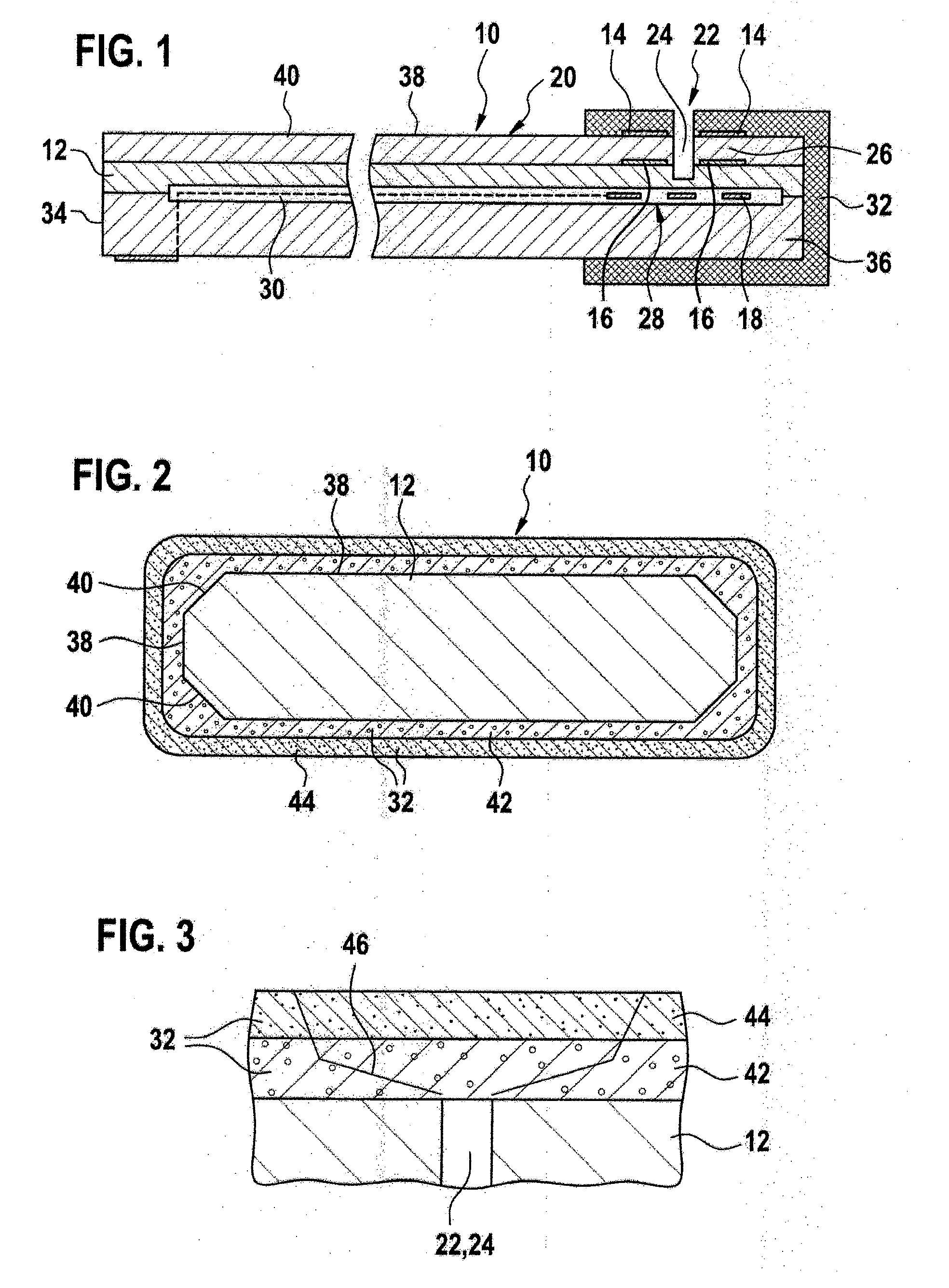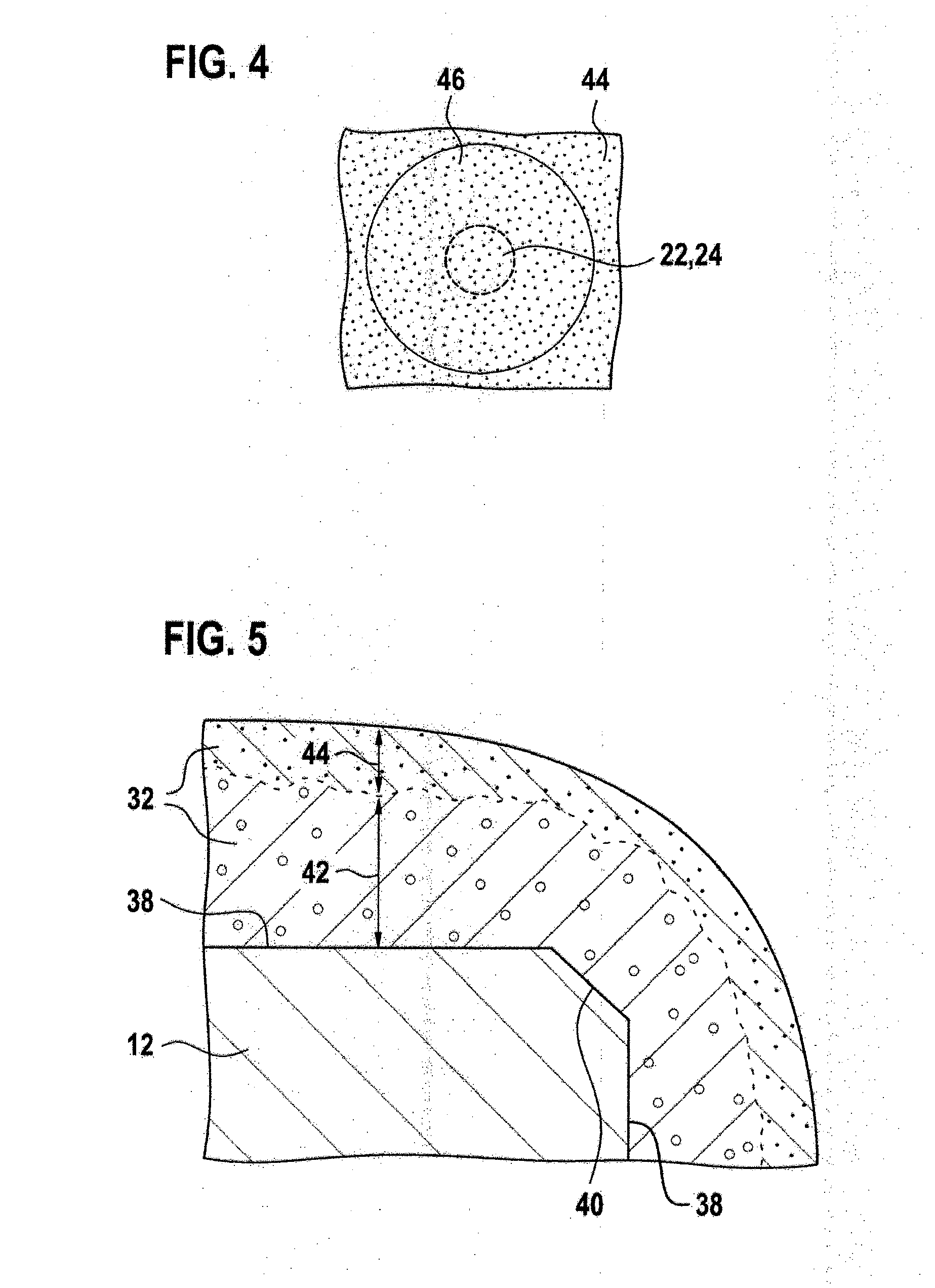Method for manufacturing a solid electrolyte sensor element for detecting at least one property of a measuring gas in a measuring gas chamber, containing two porous ceramic layers
a technology of solid electrolyte and sensor element, which is applied in the direction of instruments, measurement devices, scientific instruments, etc., can solve the problems of affecting the heat-up behavior of the sensor element, affecting the robustness of thermal shock, and water droplets forming in the exhaust pipe, so as to achieve the effect of increasing the thermal mass and improving the robustness against thermal shock
- Summary
- Abstract
- Description
- Claims
- Application Information
AI Technical Summary
Benefits of technology
Problems solved by technology
Method used
Image
Examples
Embodiment Construction
[0032]Sensor element 10 illustrated in FIG. 1 may be used for detecting physical and / or chemical properties of a measuring gas, whereby one or multiple properties may be detected. The present invention is described below in particular with regard to a qualitative and / or quantitative detection of a component of the gas, in particular with regard to a detection of an oxygen content in the measuring gas. The oxygen content may be detected in the form of a partial pressure and / or in the form of a percentage, for example. However, other types of gas components are also detectable in principle, for example nitrogen oxides, hydrocarbons, and / or hydrogen. Alternatively or additionally, however, other properties of the measuring gas are also detectable, such as the temperature, for example. The present invention is usable in particular in the field of automotive technology, so that the measuring gas chamber may in particular be an exhaust tract of an internal combustion engine, and the measu...
PUM
| Property | Measurement | Unit |
|---|---|---|
| temperature | aaaaa | aaaaa |
| temperature | aaaaa | aaaaa |
| temperature | aaaaa | aaaaa |
Abstract
Description
Claims
Application Information
 Login to View More
Login to View More - R&D
- Intellectual Property
- Life Sciences
- Materials
- Tech Scout
- Unparalleled Data Quality
- Higher Quality Content
- 60% Fewer Hallucinations
Browse by: Latest US Patents, China's latest patents, Technical Efficacy Thesaurus, Application Domain, Technology Topic, Popular Technical Reports.
© 2025 PatSnap. All rights reserved.Legal|Privacy policy|Modern Slavery Act Transparency Statement|Sitemap|About US| Contact US: help@patsnap.com



